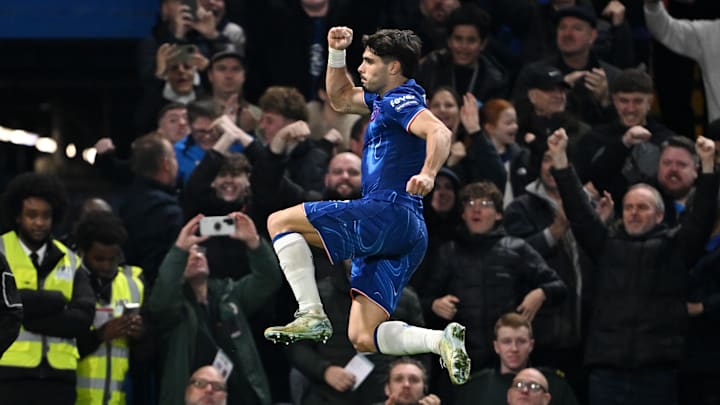Arsenal’s Fluid Attack Structure
In possession, Arsenal adopted a highly fluid approach, defying numerical formations as players interchanged positions frequently. Center-backs William Saliba and Gabriel held the deepest positions, while fullbacks Ben White and Jurrien Timber advanced high, often pinning Chelsea’s wingers and minimizing the Blues’ counterattacking options.
Well, when they had the ball, Arsenal would morph into so many different shapes. So, I'll classify what each player's roles generally were in terms of movement:
— Fahd (@fahdahmed987) November 10, 2024
- The CBs, Saliba and Gabriel, held the fort by constantly being the last two players.
- The FBs, White and Timber,… pic.twitter.com/HMhYOpHRln
The Reds' defensive midfielders, Thomas Partey and Declan Rice, alternated between joining the backline to form a three and moving into vacant half-space pockets. Martin Odegaard roamed freely, supporting wherever needed, while Bukayo Saka and Gabriel Martinelli generally held wide positions, occasionally drifting in to create overloads.
Chelsea’s Response to Arsenal’s Shape
This fluidity proved challenging for Chelsea, disrupting their structured 4-4-2 mid-block and often leaving them disorganized. Arsenal’s positional rotations and ability to create width made it difficult for Chelsea to settle into a solid defensive structure.
As explained in the pre-match analysis I posted earlier today, Arsenal create most of their chances against low-blocks from crosses. This can be from the flanks or the half-spaces. pic.twitter.com/zxhtxKf6Dx
— Fahd (@fahdahmed987) November 10, 2024
In defending goal kicks, Arsenal employed a hybrid press with Kai Havertz marking Chelsea’s center-backs while shadowing the goalkeeper, supported by Saka and Martinelli marking the fullbacks. Odegaard monitored Chelsea’s pivots, while Rice positioned himself to support the press or intercept passes.
When the home side initiated their own high press, they deployed a similar hybrid strategy. Palmer or Jackson would mark an Arsenal pivot, pressing the goalkeeper and curving their run to shadow-mark a center-back. This forced Raya to distribute to the free center-back, triggering a pressing response from Chelsea. This approach initially created problems for Arsenal, but Arteta adjusted by shifting to a 4-2-4 shape, using wide center-backs and high fullbacks to stretch Chelsea’s press.
